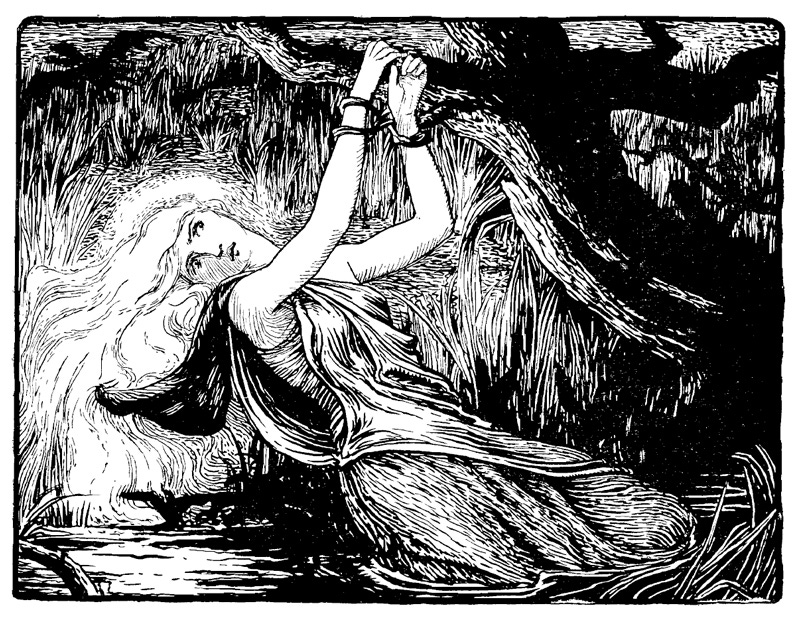The Buried Moon
A telling of 'The Buried Moon' & a meditation on Bog Time, amongst other things
(I’d recommend reading the essay before listening to the story of ‘The Buried Moon’)
I want to write about something joyful. Something that fills the heart and the belly with warmth & fullness. I’d like to tell you a story. And I will. But first, I’ve some other things to tend to.
Recently I am finding when I am most pained by the world, I do not want to write what I am called to write. There’s an internal script that lectures me on my responsibility to be positive; to spin a bright light thread for folks to gather amongst themselves. To not be the echo of bad news. Really, this wrestle is a wrestle for the balancing of truth. Perhaps it is a feeling of all too much and not now. It’s a wrestle of discerning how much I allow myself to stare into the glimmering black butter of darkness. Not enough, and I am lured into oblivion. Too much, and I am lured into terror. I am not the first to comment on this, nor am I the first to comment on the bleakness of the times we are in. The way the horror drip, drip, drips into the fabric of living. Body a vessel that carries the fabric. We carry the horror of these times collectively. We carry it whether we are aware of it or not.
Over the last fortnight I have spoken with many people, all of whom are friends, all of whom have shared that they are experiencing symptoms of depression. Fatigue. Sinking. A sensation of walking through sumptuous molasses. We are in a thick place, that we are. A boggy place. Feet sinking beneath the peat.
I like to think we are in Bog Time.
“Bog is both an archetypal & geological memory bank”, said Irish poet Seamus Heaney. “A dark casket where we have found many of the clues to our past & to our cultural identity”.
I wonder whether we are meeting with such a time now. A time where the spirit of the bog has decided to reveal the carcass of humanity, regurgitating the swallowed contents of centuries past. Perhaps we are out, collectively scouring and searching for that boggy carcass, perfectly preserved & suffocated, wading knee deep for the clues of how we must continue & how our ancestors lived. Perhaps we are looking for ourselves. The moon’s silver face a beacon through the long, lonesome nights.
Bog time is a liminal time. It is a place where the patterns of the Wood and the Sea are left sloshing & creaking in the canal of someone else’s ear. Bog time suspends decomposition & decay. Drinks the oxygen dry. Life beneath the bog in some ways, exists outside of time. Bodies undisturbed by Time’s agenda. Bog time exists in an otherworldly state; a world both familiar & unknown to those above it.
And yet, The Boglands, otherworldly & deceptive though they are dream to be known. They offer themselves up to us, piece by piece. Quietly gobbling at the consequences of our decadence. There are things we can learn from the bog, if we are so careful to pay attention.
Out in the fudgy heart of those lands, the ground glistens. Should you find yourself distracted, mind enchanted by the lights of the screen, wandering away from the bóithrín, you risk a knee deep meeting with the boglands. If you, like me live near the bogs or the moors, understanding the lay of the land is a necessity. Paying attention to the tones, colours & textures of the landscape, the muted cadmium ochres, heamotite reds, iodine browns & sepias, become a way to come into relationship with these places. They become a means of communicating with place. Paying attention becomes a way of discerning the nature of things. Without such attention, the moorlands & boglands become a vast sprawling landscape, without any key discernible features. They become a perfect recipe for losing oneself to the wilderness.
“To dance with the wild, we need discipline.” A friend once told me that, he goes by the name of Paul Kingsnorth. I think the bog would agree. If the bog could speak, I think she would say: Know thy kith, know thy kin. Intimately. Be disciplined in the this practice.
Since the age of 15, I have been preoccupied with community. Specifically communities that are poor and marginalised. I’ve volunteered & worked with women escaping violence, refugees, food banks, the homeless, addicts. I’ve lived in & worked in & helped found housing cooperatives, multistakeholder coops & workers coops. What I’ve learnt from 16 years working with community is that the places we share with one another are vital. They are precious. What I’ve witnessed in so many of the communities I’ve lived in & worked in is this: community can be the difference between a person choosing to live or choosing to die. Connection is what makes life more manageable. It’s as simple as that.
Keep reading with a 7-day free trial
Subscribe to u n r u l y b o d i e s to keep reading this post and get 7 days of free access to the full post archives.



